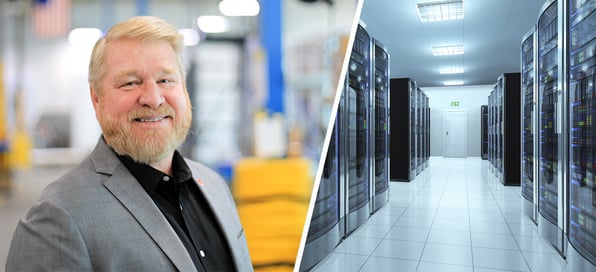As the global conversation around climate change intensifies, industries across the board are being called upon to reduce their environmental impact. The data center industry, a sector that underpins our digital economy, is under particular scrutiny. With increasing energy demands, especially from the rapid adoption of artificial intelligence (AI), cooling technologies are facing unprecedented challenges. The industry is actively seeking ways to lower its greenhouse gas (GHG) emissions, and one of the most visible targets has been refrigerants.
For decades, the use of high-GWP refrigerants in cooling systems has been a focal point for regulators and environmental advocates. Reducing GWP is an obvious step toward sustainability, but it’s not a silver bullet. A more complex and often overlooked aspect of sustainability in cooling systems is energy efficiency. Lower-GWP refrigerants frequently come with trade-offs, including efficiency losses that can lead to increased power consumption. If energy use increases significantly due to the adoption of low-GWP refrigerants, any direct GHG savings may be negated by the higher carbon footprint associated with additional electricity generation.
There is an opportunity here for a more nuanced and holistic approach. While refrigerants play a role in sustainability, they are just one component of the overall cooling ecosystem. A broader perspective is required—one that considers the total equivalent warming impact (TEWI), energy consumption, advancements in cooling technology, and the shifting energy landscape that includes renewables and grid decarbonization.
Balancing Low GWP Refrigerants and Energy Efficiency
The shift from high-GWP refrigerants like R410A (GWP 2088) to lower-GWP options such as R454B (GWP 466) represents a significant reduction in direct refrigerant impact. However, this transition comes at a cost—R454B is slightly less efficient than R410A. This means more power is required to achieve the same cooling output, which, depending on the energy mix, could result in increased carbon emissions.
Europe has taken an even more aggressive approach, favoring R454C, which has an even lower GWP but comes with an efficiency penalty so severe that the overall environmental impact may be worse. The key issue is that refrigerant policy has largely been shaped by the residential air conditioning market, where leakage rates are higher and total energy consumption is lower. Data centers, by contrast, have far more controlled environments and vastly higher energy demands, making a purely GWP-driven approach potentially counterproductive.
The AI Boom and Rising Data Center Power Consumption
The explosion of AI applications is driving unprecedented growth in data center power consumption. Estimates from Lawrence Berkeley National Laboratory suggest AI-related power demand could rise from 4.4% to as much as 12% of total U.S. electricity consumption. Approximately 30% to 40% of this additional power would be the cooling equipment. Cooling infrastructure must scale accordingly.
As AI clusters grow in density and cost—an NVIDIA GB200 NVL72 stack fits in a single rack and can cost upwards of $3 million—operators are becoming more risk-averse. Cooling inefficiencies not only increase operational costs but also heighten the risk of downtime and hardware failures, further reinforcing the importance of energy-efficient cooling solutions. Simply swapping to a lower-GWP refrigerant without considering efficiency could exacerbate the problem by increasing total power demand.
Cooling Technology Trends: The Shift to Liquid Cooling
To keep up with increasing heat loads, the industry is evolving beyond traditional air-cooled systems. Fan walls with Coolant Distribution Units (CDUs) are gaining traction, providing more efficient cooling for high-density deployments. More significantly, direct liquid-to-chip cooling is emerging as the preferred solution over immersion cooling due to its superior efficiency and ease of implementation in existing infrastructure.
A typical hybrid cooling approach involves a 70/30 split, where 70% of the heat is removed via liquid and 30% via air. This method significantly reduces energy consumption compared to legacy air-cooling systems. Additionally, concerns about water usage in cooling are often overstated. Its sustainability impact depends heavily on location and overall system efficiency. In some cases, evaporative cooling can be more energy-efficient and environmentally friendly than alternatives that rely solely on electricity-driven cooling.
The Need for a Holistic Approach
True sustainability requires moving beyond simplistic solutions. While reducing refrigerant GWP is important, it must be weighed against energy efficiency and total system impact. Data centers already represent a growing share of global power consumption, and AI is accelerating that trend. Blindly adopting low-GWP refrigerants without considering their efficiency implications could lead to higher carbon emissions, negating the intended environmental benefits.
Rather than defaulting to industry narratives, decision-makers should take a balanced approach. Optimizing refrigerant selection must be paired with advancements in cooling technology, careful assessment of power grid sustainability, and a long-term vision that considers emerging computing paradigms.
Only by integrating these factors can the industry achieve real sustainability rather than a surface-level reduction in GWP numbers. The real challenge isn’t just what’s inside the cooling system; it’s the exponential energy demand of AI and how we manage it.
As we move forward, the best approach to sustainability will be one that takes a balanced, holistic view—where refrigerant selection is just one piece of the puzzle, not the entire story.
Precision Cooling Solutions
CRACs/CRAHs for Mission Critical Applications







Blog Comments